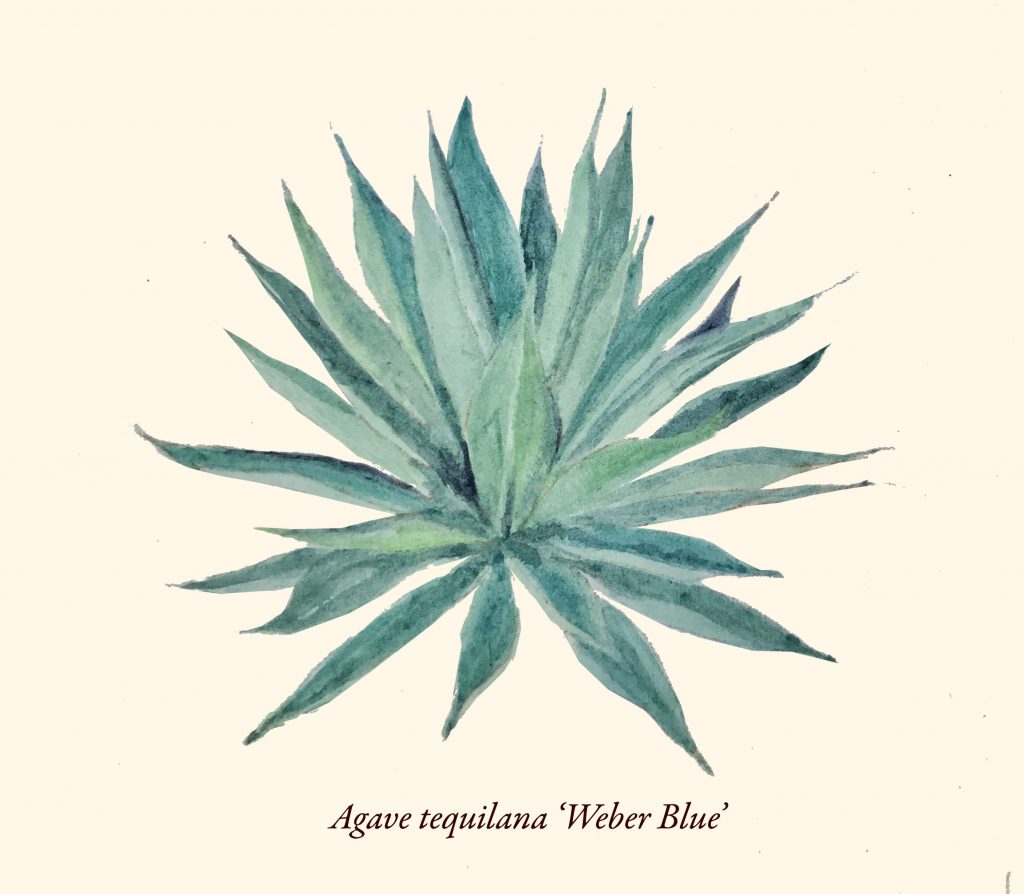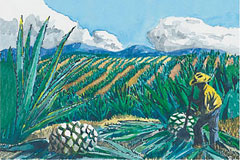
In the beginning was Maguey, the original name for the Agave plant, a slow growing succulent that forms large rosettes of strong, fleshy leaves. Agave flourishes in Mexico and dry, arid regions of the southwestern United States. In every region of Mexico various Agave species are used as the raw material in the production of fiber products, sweeteners, and alcoholic beverages such as pulque, mezcal, raicilla, Sotol, Bacanora, etc. These alcoholic beverages are either fermented or distilled.
Agave Azul (Blue Agave) is used in the production of Tequila. In 2001, the Mexican Government and European Union agreed upon the classification of Tequila and its categories. All 100% Blue Agave Tequila must be made from the Agave tequilana ‘Weber’s Blue’ agave plant, complying to rigorous specifications and only produced in certain Mexican states, primarily Jalisco and Nayarit.
At the turn of the past century a German botanist, Frederic Weber, appeared on the scene in Jalisco and named the Maguey, Agave. Agave is the name of a Greek goddess and had no historical or cultural connection to the plant.The name Agave caught on and the botanist named the Blue Agave, Tequilana Weber.
The Aztecs prized the agave as a gift from the gods and harvested the nectar from the plant by carving out a hallow space at the core where aguamiel or “honey water” was gathered to drink as a healthy fresh beverage. The juice was also fermented into an intoxicating beverage, pulque; its leaves supplied a thatch for dwellings; thread and strong cords were drawn from its tough fibers; pins and needles were made from the thorns; and the root was cooked into a palatable and nutritious food. The agave, in short, was meat, drink, clothing, and writing materials for the Aztec!
Many manufacturers use the ingredient name Agave Syrup as well as Agave Nectar (jarabe in Spanish). This traditional Mexican sweetener, called Miel de Agave or Miel de Maguey was unknown outside of southern Mexico until the late Nineties. Traditionally it was not refined and tasted more like molasses. In 1995 Colibree Company, Inc. coined the term Agave Nectar and created a product with the unique Agave flavor profile – a sweeter than sweet sweetener. Now this traditional Mexican sweetener can be found all around the world.





